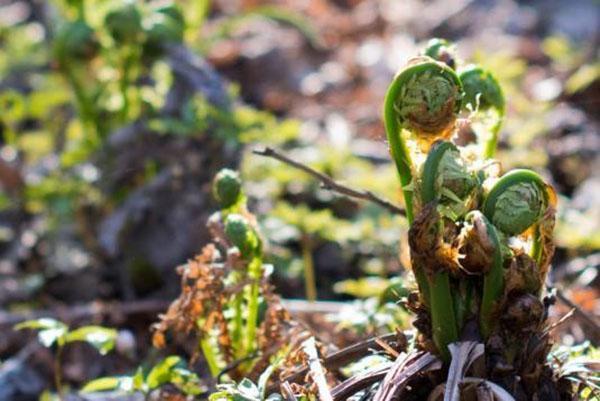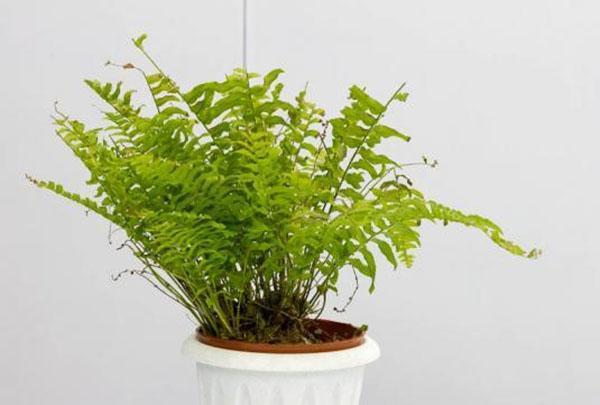We study the methods of transplantation and reproduction of nephrolepis
 As with most indoor flowers, nephrolepis transplants are performed annually. A plant native to the subtropics has become extremely popular in central Russia. This indoor fern known for its ability to purify the air by absorbing toxic substances and killing germs. It is not without reason that he takes pride of place on the windowsills of medical institutions.
As with most indoor flowers, nephrolepis transplants are performed annually. A plant native to the subtropics has become extremely popular in central Russia. This indoor fern known for its ability to purify the air by absorbing toxic substances and killing germs. It is not without reason that he takes pride of place on the windowsills of medical institutions.
Transplant instructions

Until the plant reaches the age of three, nephrolepis is transplanted every year, then after 2 years. The best time for this procedure is spring.
 A pot is selected in advance, at the bottom of which a drainage layer is laid - if you do not ensure the waste of excess water, acidification of the soil will lead to the death of the plant. Crushed brick, expanded clay, pebbles are used as drainage. A disinfected substrate is poured over it.
A pot is selected in advance, at the bottom of which a drainage layer is laid - if you do not ensure the waste of excess water, acidification of the soil will lead to the death of the plant. Crushed brick, expanded clay, pebbles are used as drainage. A disinfected substrate is poured over it.
When planting a fern, you do not need to cover the neck of the plant with earth, the upper part of the rhizome must be left above the soil surface.
After the transplant, watering is required. In the first week, it is especially important to maintain soil moisture in order to prevent the lower leaves from drying out. In the future, in addition to watering, the plant is regularly sprayed. Daylight hours should be at least 16 hours, which is ensured by creating additional illumination.
Mineral fertilizers are applied periodically. Stop using them only between October and February.
Choosing a pot for transplant
 The first nephrolepis transplant is carried out in a small pot. In too spacious, root rot is possible as a result of liquid accumulating at the bottom. For subsequent transplants, the capacity is selected larger than the previous one in diameter. Thanks to the shallow root system of the fern, the pot height can be kept the same. It is important to pay attention to its sustainability.
The first nephrolepis transplant is carried out in a small pot. In too spacious, root rot is possible as a result of liquid accumulating at the bottom. For subsequent transplants, the capacity is selected larger than the previous one in diameter. Thanks to the shallow root system of the fern, the pot height can be kept the same. It is important to pay attention to its sustainability.
Soil requirements
 How well a plant will take root in a new place largely depends on the substrate. It is prepared in advance by mixing in equal parts horse peat, greenhouse and coniferous land. Bone meal is added to the resulting mass at the rate of 5 g per 1 kg of soil.
How well a plant will take root in a new place largely depends on the substrate. It is prepared in advance by mixing in equal parts horse peat, greenhouse and coniferous land. Bone meal is added to the resulting mass at the rate of 5 g per 1 kg of soil.
Another option for preparing a soil mixture is from deciduous soil, river sand and peat, mixed in a ratio of 4: 1: 1, respectively. Adding a small amount of charcoal will help protect the plant from pests.
Cooking and disinfecting the substrate on your own is a painstaking process, so it is easier to purchase a potting soil mixture in a specialized store.
Reproduction methods of nephrolepis
 An interesting feature of the indoor fern is its ability to reproduce. This happens in various ways:
An interesting feature of the indoor fern is its ability to reproduce. This happens in various ways:
- Reproduction of nephrolepis by spores. They form on the underside of the fern leaves and are small brown dots. Spores are gently scraped off and sown into moist soil. The container is removed away from light, covered with glass. Moisten the soil daily, preventing it from drying out.After the first shoots appear on the surface, the container is rearranged to a lighted place. When the seedlings grow a little, some of them are removed, leaving the strongest specimens at a distance of 3 centimeters. After a month, they are transplanted into separate pots.

- Reproduction of nephrolepis by shoots. Planting a fern using this method ensures good rooting, resulting in a completely new plant. The shoot, which lacks leaves, is pressed to the soil surface in a nearby pot. To do this, use a wire or hairpin. Special requirements are imposed on the substrate - 70% of its composition should be covered with leaf soil and 15% each peat and sand. As soon as young leaves appear on the shoot, it is separated, transplanted into a separate pot.

- Reproduction of nephrolepis by rhizome. In this way, it is recommended to transplant only a large bush that has at least a dozen growth points. After dividing the plant, each part is placed in a separate pot, covered with plastic wrap on top. Place the pot in a well-lit, warm place. The film is periodically removed for airing, during which watering and spraying of leaves is carried out.

- Reproduction of nephrolepis by tubers. This method is only suitable for those fern species in which tubers are formed on the roots. Thanks to this method of transplanting, it is possible to preserve all the varietal characteristics of the plant. Having separated the tuber, it is placed in a prepared substrate, where it sprouts immediately.
Fern nephrolepis is an ideal plant for landscaping an apartment, office space, public institution. A thick, bright green mop of leaves will become not only a worthy interior decoration, but also a kind of air purifier.